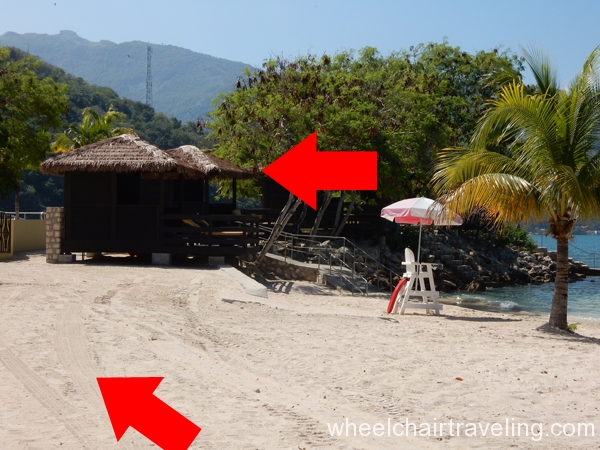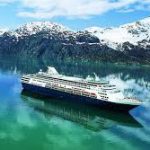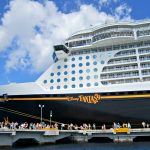Cruise travel representatives will always say that cruising is wheelchair accessible, and to some degree, they are right, but not entirely. Everything is not accessible onboard the ship, let alone on shore. This includes the biggest companies, such as Royal Caribbean and Disney. People who use wheelchairs or scooters, of course, have varying abilities, but cruise ships can still do a whole lot more to improve accessibility for all passengers.
Cruising is like traveling in an amusement park, where on the surface everything shines, but a closer look reveals some loose bolts. In terms of quality and opportunities, the major cruise lines are designed to meet a certain standard. Taking a cruise may still be the best travel option in many cases; still, there are a few things to consider before spending money on a cruise, if only to mentally prepare.
1. Cruise Deck Barriers
Automatic doors are not located everywhere, and every bar is not wheelchair friendly. On a cruise ship, there are usually a few pools and hot tubs/spas, but all do not have a ramp or lift; on some cruise ships, there are none. Also, the thick carpeting in many areas of the ship can be tiring for manual wheelchairs after a while. Some of the transitions in the doorways and hallways are a few inches wide and high; low-lying undercarriages on wheelchairs and scooters may get stuck or scrape.
2. Cabin Room Barriers
Maneuvering and functioning space in cabin rooms is tight, especially with multiple people. Only one side of the bed is open for someone in a wheelchair to transfer onto the bed. If there is another person with a wheelchair then he/she will have to transfer at the foot of the bed. If a hoist or a lift is needed to get on and off the bed, not all cruise lines have space under the bed for such a device. If you need special equipment (cannot bring your own) then plan and reserve what you need. For example, a wheelchair, oxygen tank, a lift or hoist, etc.
3. Getting On/Off the Boat
No matter the cruise, there will always be stops, as this is the design of a cruise, and a number of barriers may restrict or even prevent some people with wheelchairs or scooters from getting off the ship. For starters, depending on the ocean’s tide and the ship’s equipment, the steepness of the ramps at the docks can vary drastically, which is more of a problem for manual wheelchairs. Sometimes these ramps are curved or have transitions with protruding hardware, which may create a small barrier for some.
Keep in mind that not all cruise ports even have a dock, or there may be other cruise ships blocking access. In these cases, passengers are required to transfer to a smaller boat, called a tender boat, and be shuttled to the shore. 99% of cruise ships do not have the proper equipment (a lift/hoist) to safely and securely move passengers with limited mobility onto these tender boats. Those who can walk or stand a little and have a manual wheelchair will have a significant advantage in these situations. In a few rare cases, crew members have carried passengers, but this is not required by cruise companies. Of course, passengers who need assistance may rely on travel companions, but this is not always a possible or safe option.
4. Shore Activities
Since the cruise companies are liable for what happens to the passengers onboard, the cruise line tries to control the experience as much as possible. Cruise ships often contract with local companies to offer passengers various tours and activities. Of course, any passenger can book something independent from the cruise company, but the cruise is not liable for what happens. There are accessible tour and activity companies, but it may take a lot of time to book. Researching and getting special needs details and pricing about excursions from people in different countries is very time-consuming.
Every port will not have something to do for passengers with wheelchairs or scooters. One challenge at some ports is a lack of accessible transportation, and when some is available, it’s usually limited. Space is limited too; sometimes there is only room for one wheelchair or scooter. When there is no way to get around, passengers who cannot ascend stairs and/or have a non-collapsible device cannot be included on excursions. Instead, eating, drinking, shopping, and exploring whatever is nearby or having a day on a nearly empty ship may be the only possibilities. Booking an accessible activity through the cruise, either before boarding or during, is not a quick and seamless experience. It is also important to realize that multiple passengers will have a wheelchair or scooter, and space is limited. Plus, multiple cruise ships may have passengers onshore at the same time.
The few activities that are classified as wheelchair friendly by the cruise are designed to be the least physically strenuous, so forget about booking things like kayaking or zip-lining on a cruise, unless personal arrangements have been made in advance (as previously stated). Even still, a passenger may still not be physically able to participate in an accessible activity, or it may be determined that the activity is not worth the price. For instance, the only excursion that could be made available is a cooking class or a tour, and neither the kitchen nor stops on the tour are completely accessible. Or perhaps, a cabana on a tropical island has been modified for access but the pathway to it has not.
5. Cultural Authenticity
If interested in really exploring an area of the world, don’t take a cruise. Cruises are amusement park-like overviews, where the cruise company is in control. Advertisements are everywhere. If you only want to shop, relax, and eat, then cruises are the way to go, though food authenticity is also lacking. It is not to say that the food was bad, it’s just not the same caliber as a local favorite restaurant. Even at the nightly formal dinner or the additional expensive restaurants, the quality was that of an American chain restaurant. So despite a variety of food choices from different regions of the world, authenticity is missing. Therefore, cruises are not the equivalent of international dinning.
When docked at a cruise port, it is also important to decipher what businesses are owned by the cruise company and those of locals. Commonly on tropical islands and remote ports, cruise companies will own some or all of the shops and restaurants close to the port. Locals will be employees, but not owners, so it’s good to ask if it’s not obvious. Supporting local businesses is vital to human society and culturally authentic.
6. Cruise Employees
Employees may or may not be genuine, but regardless they will keep smiling because they are paid to do so, like playing a character in a movie. Many seek employment on a cruise to support a family or use the money to build a future or travel, but none have a long-term stake in the quality of the cruise business. Services are performed to meet a certain hospitality standard. The goal is to keep the customers happy and to move them along.


































